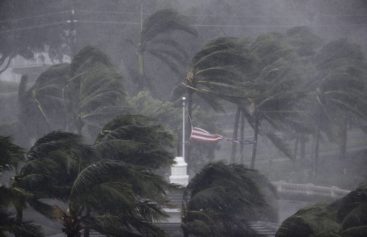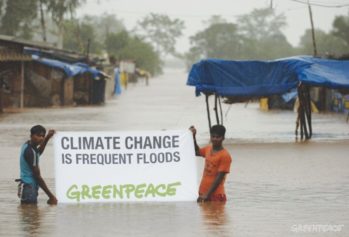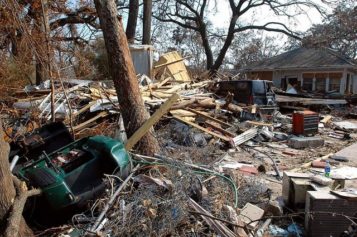It is a once-in-a-generation storm, a coalescing of three different weather fronts to create an event known that will forever be known as Sandy, a devastating hurricane/post-tropical cyclone that changed the landscape of the Northeast—at least for the next several days—as it brought so much wind, rain and flooding that people on the East Coast saw sights they never thought they’d see in their lifetimes.
More than six million people are still without power this morning, with transportation systems shut down from Boston to Washington, bridges closed and officials warning that it could take several days for crews to begin the process of returning normalcy to the East Coast. Even the Erie Canal was closed.
The damage estimates could reach $20 billion.
The storm killed at least 16 people, mainly with toppled trees, after killing 66 in the Caribbean before it made its way north. Sandy isn’t even done yet, as it is expected to head north to Canada and all the way west to the Great Lakes—with snow expected in some states.
In New York City, the seven subway tunnels under the East River remained flooded, as the chairman of the Metropolitan Transportation Authority said the storm was the most destructive in the city subway’s 108-year history.
“We are assessing the extent of the damage and beginning the process of recovery,” said chairman Joseph J. Lhota, but he did not provide a timetable for restoring transit service to a paralyzed city.
The extensive evacuations along the Atlantic seaboard meant that most of the shorefront looked like ghost towns. To demonstrate the severity of the storm, in New York Mayor Michael Bloomberg ordered the ubiquitous yellow cabs to get off city roads—meaning New Yorkers without cars wouldn’t be able to go anywhere. A surge of seawater 13 feet high rushed into Manhattan—a good 3 feet above the previous record—leading to the startling sight of waterfalls rushing into subways and tunnels like the Brooklyn Battery Tunnel leading from Manhattan to Brooklyn. With high winds increasing at high elevations, the news media became captivated by a partially toppled crane that was suspended 74 stories above Midtown.
Outside of the city, the Jersey shore saw significant damage—parts of the boardwalk at Atlantic City were washed away by the surging surf.
“It’s the worst I’ve seen,” David Arnold, watching the storm from his longtime home in Long Branch, N.J., told the New York Times. “The ocean is in the road, there are trees down everywhere. I’ve never seen it this bad.”
In the Rockaways, an island section of Queens that appears to sit out in the sea, nearly 200 firefighters were still battling a blaze on Tuesday morning that destroyed at least 50 tightly-packed homes in the beach community. According to a Fire Department spokesman, the area was “probably the most flooded part of the city, so there are all sorts of complications.”
In New York, Gov. Andrew M. Cuomo’s office said late Monday night that at least five deaths, at least three involving falling trees, were caused by the storm. About 7 p.m., a tree fell on a house in Queens, killing a 30-year-old man, the city police said. About the same time, two boys, ages 11 and 13, were killed in North Salem in Westchester County, when a tree fell on the house they were in, according to the State Police.
In Morris County, N.J., a man and a woman were killed when a tree fell on their car Monday evening, The Associated Press reported.
Off the North Carolina coast, a replica of the H.M.S. Bounty, a tall ship built for the 1962 movie “Mutiny on the Bounty” and used in the recent “Pirates of the Caribbean” series, went down near the Outer Banks after being battered by 18-foot-high seas and thrashed by 40-m.p.h. winds. The body of one crew member, Claudene Christian, 42, was recovered while another crew member remained missing.
“The most important thing right now is for people to use common sense,” said Delware Gov. Jack Markell. “We didn’t want people out on the road going to work and not being able to get home again.”
The storm also brought a halt to presidential campaigning, as President Obama returned to the White House and met with top advisers. Obama said the storm would disrupt the rhythms of daily life in the states it hit.
“Transportation is going to be tied up for a long time,” he said. “The fact is, a lot of these emergency crews are not going to get into position to start restoring power until some of these winds die down.”
He added, “That may take several days.”


